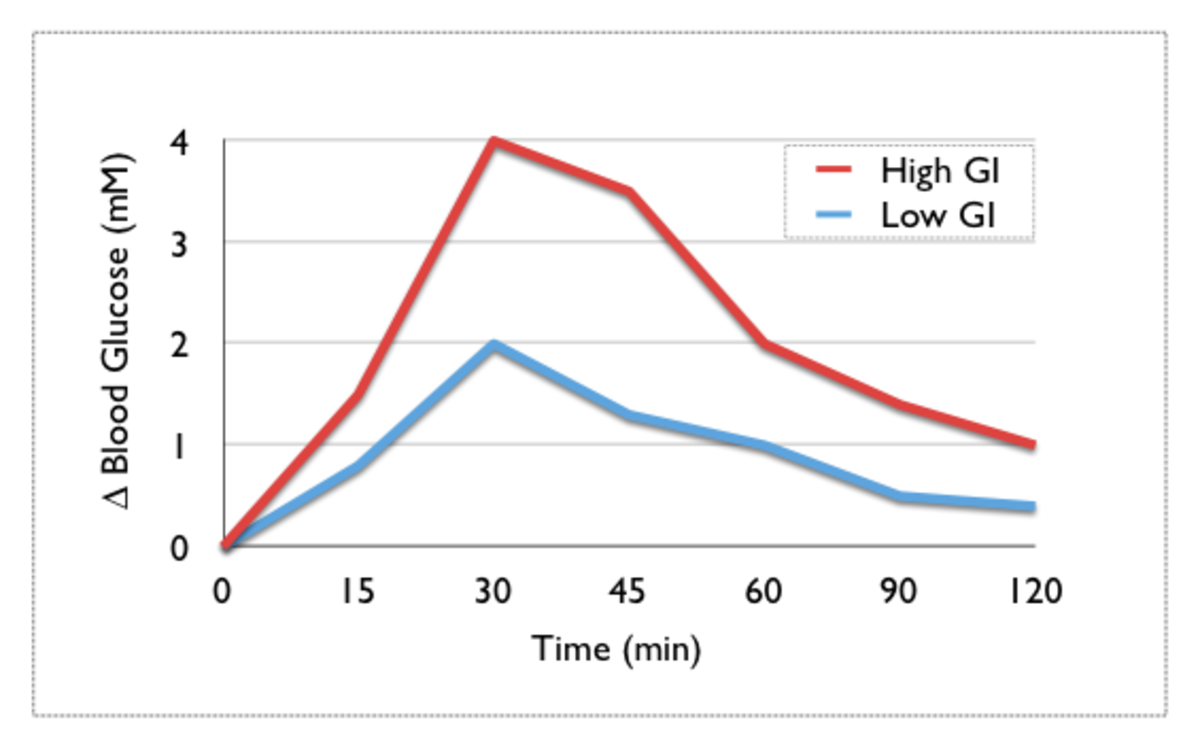How Glycemic Index is Determined
Determing Glycemic Index and Glycemic Loads of Food
The process by which a food is assigned a glycemic index is to measure that food's blood glucose response against a test control food, white bread or pure glucose, explains the Linus Pauling Institute of Oregon State University.
A volunteer is given a 50 g carbohydrate portion of the food to be tested. Blood samples are taken before eating the tested food and at regular intervals thereafter to determine blood sugar responses. On another day, the volunteer is given a 50 g carbohydrate portion of either white bread or glucose, with blood samples taken at the same intervals as the test food. The glycemic index assigned to the tested food is based on its blood sugar elevating results in comparison to the control food.
However, the glycemic index of a food only tells a portion of the story. Once the glycemic index for a food has been determined, scientists then determine the glycemic load of that food. The glycemic load is calculated by multiplying the glycemic index of the food by the number of carbohydrates in grams in a typical serving, then dividing by 100.
The lower the glycemic index/glycemic load is for an individual food, the more slowly it will raise blood sugar levels and the less dramatically it will do so. Grains are foods at the lower end of the glycemic index. Potatoes rank as high glycemic index foods.
The Linus Pauling Institute explains that the glycemic load concept was developed by scientists to both describe the quality of a food--by its glycemic index--and the quantity of carbohydrates in foods, meals and diets.
Why should you, the individual consumer, be at all interested in the glycemic index and glycemic load? In many industrialized nations, but most specifically the United States, both obesity and diabetes are developing at historic rates. Insulin resistance, a condition that precedes the development of type 2 diabetes, is also being diagnosed at an alarming rate. Becoming more conscious of the health outcomes of eating various foods will enable you to make healthier, more nutritious food choices.
Sources: "Glycemic Index and Glycemic Load," Linus Pauling Institute
"Healing Foods Pyramid," University of Michigan Integrative Medicine
Knowing the glycemic index/glycemic load of food aids you in making healthier eating choices.

Finding the Glycemic Index of Foods
The University of Sydney provides a list of over 1,600 foods and their glycemic index values. Foods such as meat, most vegetables, fish and other foods without carbohydrates won't be listed there, as a food must have carbohydrates in it to have a glycemic index. You can find foods by their names or search for food that is either above or below a glycemic index of 55.
Linus Pauling Institute
- Linus Pauling Institute at Oregon State University
Linus Pauling Institute at Oregon State University, "Glycemic Index and Glycemic Load"
Unversity of Michigan Integrative Medicine
- UMIM: Healing Foods Pyramid | University of Michigan Health System
"Healing Foods Pyramid"
Related Hub Topics
- Weight Watchers New Program: Points Plus (WW Points Plus)
New program based on glycemic index/glycemic load of foods. PointsPlus is the new name for the Weight Watchers plan, and its a good name. Weight Watchers built a great business on teaching people to watch their food intake by associating









